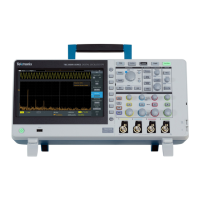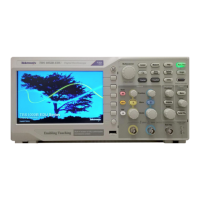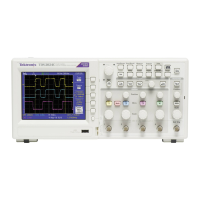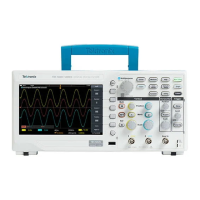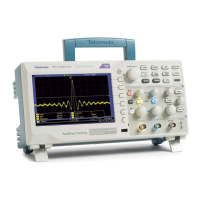Arguments
ASCii specifies ASCII curve data.
BINary specifies that the incoming data is in a binary format whose further
interpretation requires knowledge of BYT_NR, BIT_NR, BN_FMT, and
BYT_OR.
Examples
WFMINPre:ENCdgASC specifies that the waveform data is in ASCII format.
WFMPre:ENCdg? might return :WFMINPRE:ENCDG BIN, indicating that the
waveform data is in binary format.
WFMInpre:NR_Pt?
Returns the number of points that are in the incoming waveform record.
Group
Waveform
Syntax
WFMInpre:NR_Pt <NR1>
WFMInpre:NR_Pt?
Related Commands
CURVe on page 87, DATa on page 89, DATa:STARt on page 92, DATa:STOP on
page 93, SAVe:WAVEform on page 210, SAVe:WAVEform:FILEFormat on
page 211, WFMInpre:NR_Pt? on page 251
Arguments
<NR1> is the number of data points if WFMInpre:PT_Fmt is set to Y. It is the
number of min-max pairs if WFMInpre:PT_Fmt is set to ENV.
Examples
WFMINPRE:NR_PT 10000 specifies that 10000 data points will be expected.
WFMINPRE:NR_PT ? might return :WFMINPRE:NR_PT 10000 indicating that
there are 10000 data points in the expected incoming waveform record.
W commands
TBS2000 Series Programmer 251
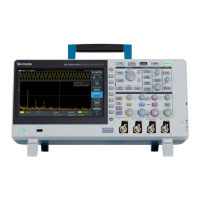
